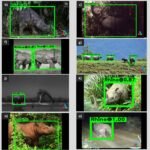Researchers from Microsoft and global leading universities study the ‘offensive AI’ threat
In the ever-evolving landscape of artificial intelligence (AI), the potential for both positive and negative applications is vast. While AI has brought about numerous advancements and benefits, there is a growing concern regarding its potential misuse for malicious purposes. Recognizing the need to address this pressing issue, researchers from Microsoft and several leading universities have embarked on a groundbreaking study to understand and counter the threat of ‘offensive AI.’ In this blog, we explore this collaborative research effort and its significance in mitigating the risks associated with AI misuse.
The Rise of Offensive AI: Offensive AI refers to the utilization of AI technology for harmful, unethical, or malicious purposes. This includes AI-driven cyberattacks, automated disinformation campaigns, deepfake manipulation, and the exploitation of vulnerabilities in AI systems. These malicious applications pose significant threats to individuals, organizations, and society as a whole, highlighting the urgent need for proactive research and countermeasures.
Collaborative Research Initiative: To tackle the offensive AI threat, Microsoft has partnered with leading universities, including MIT, University of Oxford, University of Cambridge, University of California Berkeley, and others. This multidisciplinary collaboration brings together experts from various fields, including AI, cybersecurity, policy, and ethics, to comprehensively study offensive AI and develop strategies to mitigate its risks.
Understanding Offensive AI: The research initiative aims to delve into offensive AI from multiple angles. By analyzing real-world examples and emerging trends, the researchers seek to understand the underlying techniques, motivations, and potential impacts of offensive AI. This understanding is crucial in formulating effective defenses and policies to counter the misuse of AI technology.
Developing Countermeasures: One of the primary goals of this collaborative effort is to develop robust countermeasures against offensive AI. Researchers are exploring ways to enhance the security and robustness of AI systems, identify and address vulnerabilities, and improve detection and mitigation techniques for AI-driven cyberattacks. Additionally, they are investigating methods to authenticate and verify AI-generated content to curb the spread of deepfakes and disinformation.
Ethics, Policy, and Awareness: The study also emphasizes the ethical considerations surrounding offensive AI and its implications on policy and regulations. Researchers are working to establish ethical guidelines and best practices for AI development and deployment, promoting responsible AI use, and raising awareness about the potential risks and societal impact of offensive AI.
Collaboration and Knowledge Sharing: The collaborative nature of this research initiative enables the sharing of knowledge, expertise, and resources. By combining industry and academic perspectives, the researchers can foster innovation, develop comprehensive solutions, and drive meaningful change in the AI landscape.
The Broader Impact: The study on offensive AI extends beyond immediate technological concerns. By addressing the risks associated with AI misuse, the research contributes to the larger dialogue on responsible AI development and deployment. It reinforces the importance of considering ethical, societal, and policy dimensions while advancing the frontiers of AI technology.


































